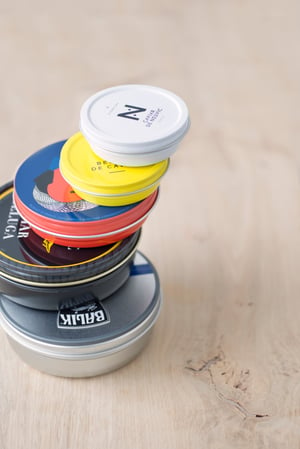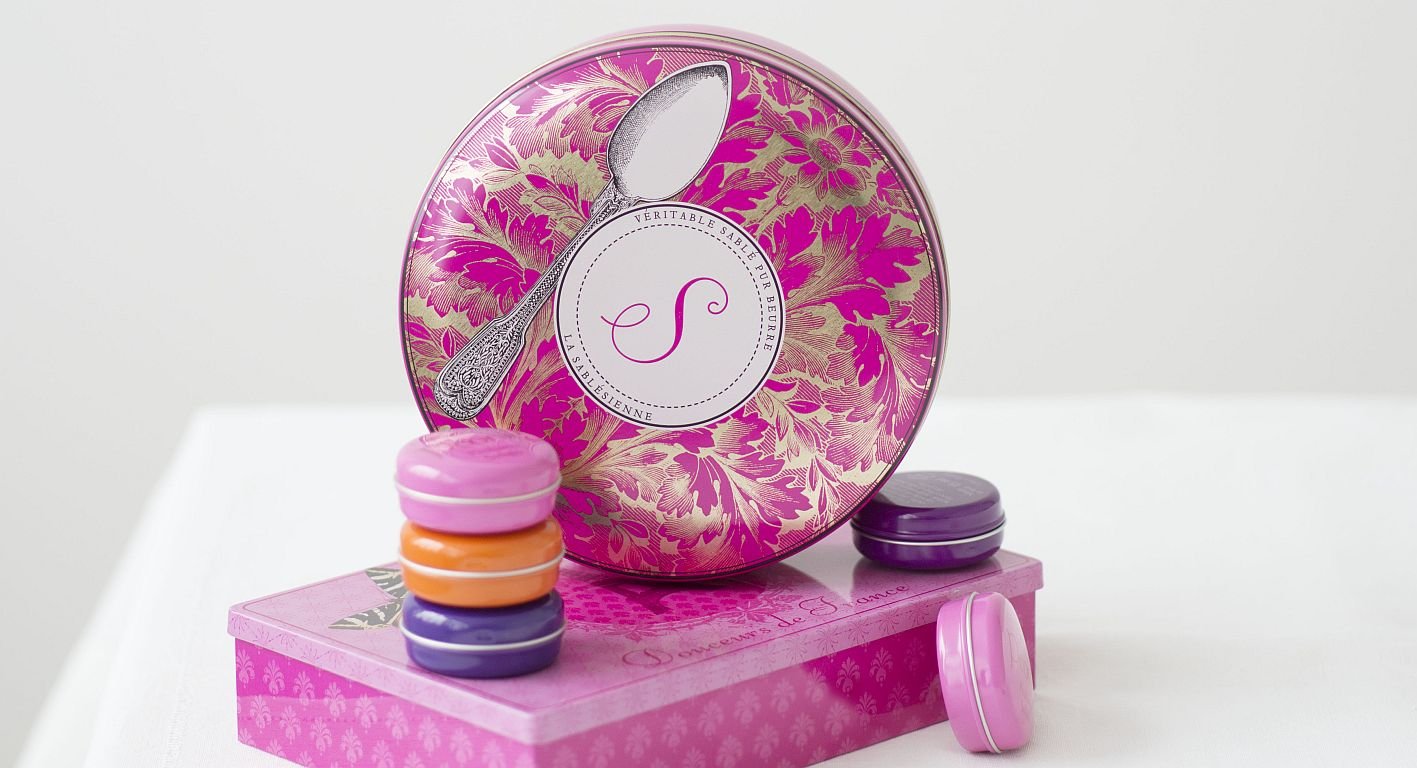How much does packaging design influence the success of private label tins? The answer may apply to all forms of packaging of any shape or color. While consumers might have an idea from experience what's inside the package, the closest they can usually get to a product before a purchase is holding it. Research shows packaging can influence people's perceptions of taste, which contributes to the success of a food product packaged in fancy tins. This article describes how private labels can benefit from this.
Private Label Branding for Fancy Tins

One of the paths to marketing successful products is through private label partnerships. In other words, unique branding can be applied to existing generic products made by third parties.
A study by researchers Richardson and Dick in 1994 revealed that consumers don't differentiate between store brands and competing national brands for the same products.
Familiarity plays an important role in purchasing decisions, but consumers are more interested in product choices than favorite brands.
Developing a private label has several advantages if the third party manufacturer or packaging designer is flexible enough. This flexibility allows a retailer to make changes to packaging design when they want to gain competitive edges.
A national brand, by contrast, usually must go through a more rigorous and time-consuming process to make adjustments to products and packages.
The concept of fancy tins as packaging goes back longer than a century. Tins in general are efficient for packaging food items because they are strong and reliable solutions for preserving freshness. Another advantage to tins is that they work well for labeling. Adding fancy design that can be changed to the equation provides more powerful marketing strength to the product.
Consumers who notice and support private label brands are often attracted by packaging, according to a study at the University of Ulster in Northern Ireland. Many times shoppers who are interested in buying alternatives to national brands are influenced by creative designs.
Factors Influencing Shifts Toward Private Labels
 Several factors play into why shoppers are willing to abandon national brands for taking chances on alternatives such as store brands. Pricing is always a key factor across many purchasing decisions. When national brands gets too expensive, especially during an economic downturn, shoppers naturally start looking for ways to cut costs.
Several factors play into why shoppers are willing to abandon national brands for taking chances on alternatives such as store brands. Pricing is always a key factor across many purchasing decisions. When national brands gets too expensive, especially during an economic downturn, shoppers naturally start looking for ways to cut costs.
A private label has wide open opportunities to undercut the market in these scenarios. Consumers who buy products for their families are most likely influenced by cost-cutting strategies. Cost-conscious consumers are less likely to care about the packaging design, unless it goes along with the minimalism concept that less is more.
But in times when consumer confidence is high, shoppers pay less attention to price and more attention to their desires. In these cases, packaging elements become more crucial. In fact, consumer behavior studies show that about 65 percent of consumers are influenced by packaging in some way.
When consumers feel more free to indulge in their tastes, they are more likely to be persuaded by descriptor words that appeal to the senses. Furthermore, consumers are more curious about product and packaging quality when economics is not the main driving issue behind purchasing decisions.
These findings open the door for opportunities in premium branding, in which fancy tins can play an important role.
Adjusting Packaging Design
The design of fancy tins can make a big difference in how consumers respond to new or different brands than the ones they've become familiar with. Selling similar products in unique containers that stand out can be very profitable, once the right design clicks. In that sense, working with a company that customizes packaging designs is the key. A retailer has the power to dominate a market by learning from its customer base about their reviews and expectations of existing products and packaging.

This direct target market knowledge gives the retailer a competitive edge if they can use customer feedback to adjust their own unique packaging designs. A customer, for example, might be a fan of only certain fancy tins. They may see the value of collecting tinplate or aluminum containers for multiple usage, but they may prefer certain colors or shapes. Gathering this feedback allows the retailer with control of packaging designs to decide on necessary adjustments to make the package more appealing.
For food items, packaging design needs to correspond with certain aesthetics that involve shapes and colors. Taste testing studies linked with packaging have shown that perceptions of taste can be swayed by corresponding designs. Angular shapes can be more captivating than round shapes and more likely to affect perceptions about price expectations and product taste.
Conclusion
The future of fancy tins has many possibilities the more researchers explore the links between packaging and purchasing decisions. While this connection has been established in studies, applying this concept to specific target markets is the key to successful private label branding of fancy tins.
References and Further Reading
- More articles on Fancy Tins (2019 - today), by Alex Cosper et al.
- Private Label Positioning and Product Line (2017), by Stéphane Capricey
- The State of Private Label Around The World (2014), by Nielsen
- Tough package, strong taste: The influence of packaging design on taste impressions and product evaluations (2011) Liza Becker , Thomas J.L. van Rompay , *, Hendrik N.J. Schifferstein , Mirjam Galetzk in: Journal of Food Quality and Preference, Volume 22, Issue 1, January 2011, Pages 17-23
- Read more on Luxury Packaging by Alex Cosper
- From Disgust to Desire: How Products Elicit Our Emotions (2004), by Pieter M. A. Desmet, in Design and Emotions, edited by Dena McDonagh et al., page 8.
- Definition: Luxury Foodstuffs (retrieved 17.10.2017), Wikidata
- Luxury branding: the industry, trends and future conceptualisations (2015), by Yuri Seo and Margo Buchanan-Oliver
- Food packaging: The medium is the message (2010), by Corinna Hawkes
- More articles on Chocolates , Biscuits and Confectionery packaging, by Alex Cosper and Dawn M. Turner
- Multisensory design: Reaching out to touch the consumer (2011) by Charles Spence and Alberto Gallace
- Assessing the influence of the color of the plate on 2 the perception of a complex food in a restaurant setting (2013), by Betina Piqueras-Fiszman, Agnes Giboreau and Charles Spence
- Does the weight of the dish influence our perception of food? (2011), by Betina Piqueras-Fiszman, Vanessa Harrar, Jorge Alcaide and Charles Spence
- The weight of the container influences expected satiety, perceived density and subsequent expected fullness (2011), by
Betina Piqueras-Fiszman and Charles Spence






